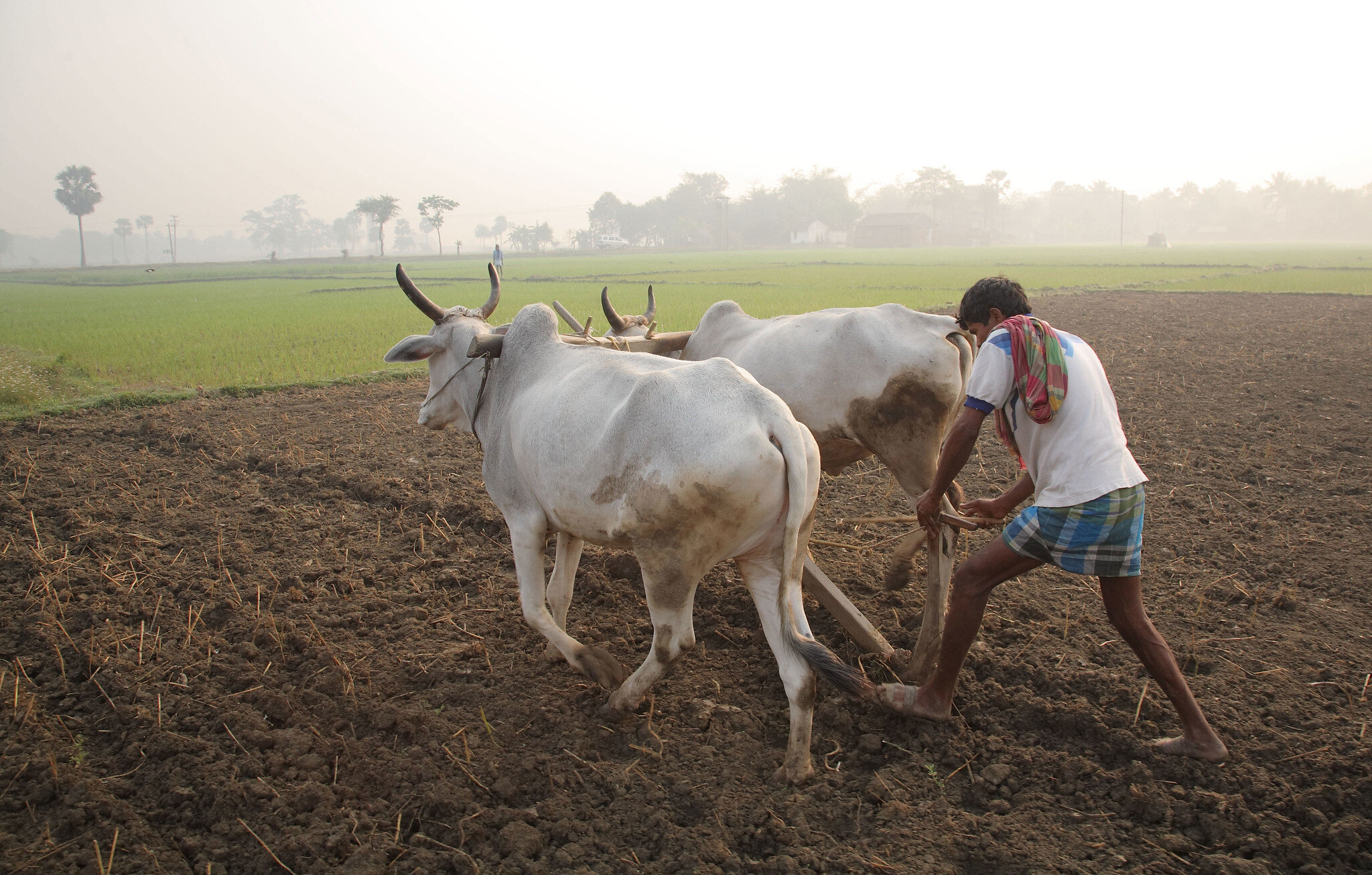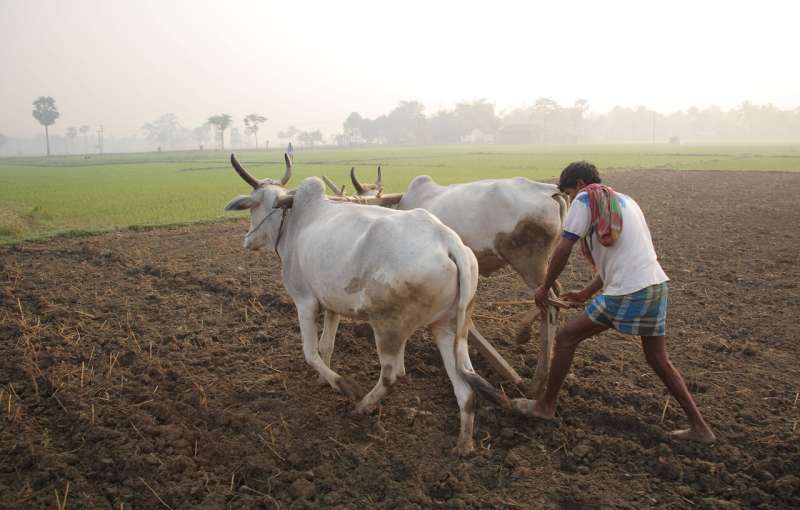

To address the climate crisis, a paradigm shift in the global livestock sector is not an option—it is a necessity. But how and where should this transformation occur?
In a new paper published today in the journal Nature Sustainability, researchers from the CGIAR’s Livestock and Climate Initiative and Wageningen University found that investments in only a handful of countries—India, China, Brazil, Pakistan, and Sudan—can make a huge global impact. Globally, the authors say, changes to the livestock sector have great potential to both mitigate the climate crisis, and help people adapt.
Livestock production contributes to climate change, and is vulnerable to it at the same time. Ruminant animals’ burps and manure release the greenhouse gas methane into the atmosphere, and there are other carbon emissions associated with animal farming as well. Livestock production directly accounts for 5.8% of global annual greenhouse gas emissions—and closer to 23% including associated deforestation and soil degradation. Animal-based foods represent about one-third of food systems’ contribution to global emissions.
But the climate footprint of most livestock-dependent communities in the developing world is vastly smaller than the intensified systems common in developed countries—while climate hazards like droughts, heatwaves and floods disproportionately affect small-scale farmers in the Global South. Keeping farm animals is vital to the livelihoods of almost a billion people in Africa and South Asia. Goats, cows and sheep provide milk and meat, pull plows, are deeply woven into cultures, and act as a form of insurance in tough times.
“We really don’t see a future without livestock,” says Jacobo Arango from the Alliance of the Bioversity International and the International Center for Tropical Agriculture (CIAT) (The Alliance). “The current livestock systems need to be improved, not gotten rid of. Investors need to start directing money into solutions to transform them.”
Any investment in improving these systems needs to consider both climate mitigation and adaptation, says Julian Ramirez-Villegas from The Alliance and Wageningen University—something that most investors and countries are not yet doing. “You can’t separate the cow that is emitting the greenhouse gas from the cow whose production is affected by climate stress,” say the researchers. Interventions and policies focused solely on mitigating greenhouse gas emissions could have negative consequences for the ability of smallholders to adapt to changing climate conditions, and vice versa.
In their paper, Arango, Ramirez-Villegas and co-authors analyzed both the livestock emissions and climate risks of 132 low- and middle-income countries, and found that almost everywhere, mitigation and adaptation were entangled. They identified India, China, Brazil, Pakistan, and Sudan as top-five investment priorities—places with both high emissions and large numbers of people and animals exposed to climate stress. Combined, these five countries account for 46% of the total value of livestock production, 35% of the total rural population exposed to climate hazards, and 51% of livestock greenhouse-gas emissions.
“A handful of countries disproportionately contribute to global livestock emissions,” mainly because of their size and large populations, explains co-author Todd S. Rosenstock, from The Alliance. “These act as critical leverage points for the livestock sector’s interactions with the climate system, land and livelihoods. Effective mitigation strategies must prioritize investments in sustainable livestock practices in these high-impact regions.”
That doesn’t let high-income countries off the hook for their farming emissions, or mean investment shouldn’t occur in other low-income countries, cautions Ramirez-Villegas. Kenya and Ethiopia, for instance, both scored highly. “It’s just that if you transform the way livestock is produced in these five countries, you have the potential to make a very, very big difference in the climate system.”
Research already suggests pathways for such transformation. At the most basic level, livestock production must be decoupled from deforestation, says Arango. “We have enough land. Deforestation needs to stop, period. There is no justification for livestock production to come at the expense of forests.” Boosting technical assistance to help farmers to implement rotational grazing systems is also a no-brainer.
Shifting animals’ diets to locally-adapted forage plants is more climate-smart than buying commercial feed. And there’s potential for methane emissions-reductions without slashing herd sizes, too. CGIAR researchers in Colombia have found that adding forage legumes to traditional grass monocultures can reduce cows’ methane emissions by 15% (in the Colombian context).
Planting trees within pastural systems—or silvopasture—also has multiple climate benefits. Shrubs and trees can improve carbon storage and soil health, increase productivity, boost biodiversity and provide shade to animals during heatwaves. In Colombia, government investment has helped to spur the expansion of silvopastoral systems by 35,000 hectares in 2023 alone, with the aim of reaching 300 thousand hectares by 2026. In Brazil, several reforestation programs are also scaling silvopasture across the country.
In Ethiopia, a CGIAR Research project brings together remote sensing technology, satellite imagery, and on-ground sensors to capture essential data about water levels, flow rates, and water source conditions, to provide pastoralists with nearly real-time information to help them make smart decisions about where to bring their herds—and hard decisions about when to cull or sell animals in the case of persistent drought.
“Having 10 weak animals is much worse in terms of mitigation and adaptation than having five okay ones,” says Ramirez-Villegas. If proven, scaling this system across Africa—where 268 million climate-vulnerable people herd animals across 43% of the continent—could have enormous impact.
“These kinds of analyses are critical for us to focus scarce resources in the places and on the topics with maximum potential for impact,” says Andy Jarvis, Director of the Future of Food program at Bezos Earth Fund. “The results published here will certainly inform our investments on making livestock more sustainable, reducing emissions from the sector and making it kinder on nature.”
Interventions will need to be tailored to the specific country context, says Arango. But the opportunities for transformation are immense—and underfunded.
“If livestock producers across the Global South could improve their grazing management and plant trees, and gain access to safety-nets, information, and resources to help them make climate-smart decisions, then I think we would make a dramatic change in both carbon emissions and productivity.”
More information:
Camila Bonilla-Cedrez et al, Priority areas for investment in more sustainable and climate-resilient livestock systems, Nature Sustainability (2023). DOI: 10.1038/s41893-023-01161-1
Provided by
International Livestock Research Institute
Citation:
Strategic investments in five countries hold the key to tackling climate challenges in livestock production: Study (2023, June 29)
retrieved 29 June 2023
from https://phys.org/news/2023-06-strategic-investments-countries-key-tackling.html
This document is subject to copyright. Apart from any fair dealing for the purpose of private study or research, no
part may be reproduced without the written permission. The content is provided for information purposes only.

